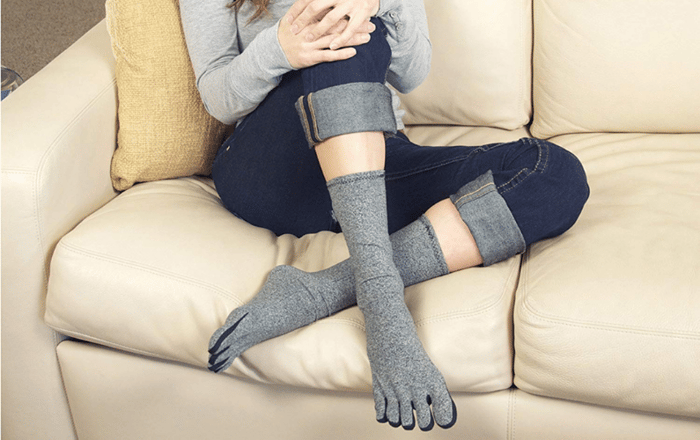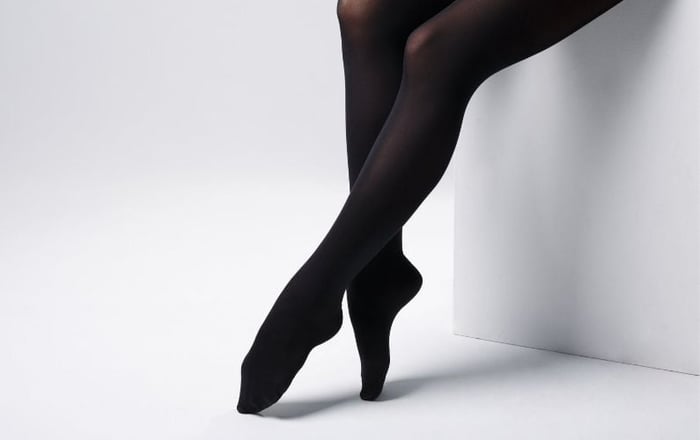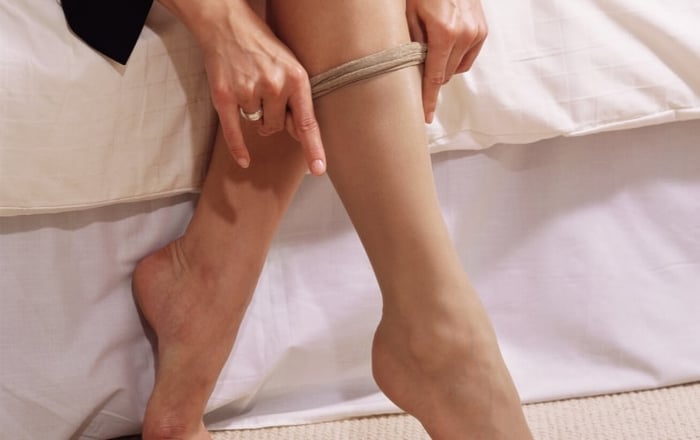Wearing compression socks is an effective way to increase blood flow in your legs, helping with the feeling of 'heavy legs' as well as muscle fatigue and soreness after standing, sitting, or working out. Keep reading to see the full guide.
Choosing the right compression sock requires a little research and a little measuring. The good news is, the only tools you will need are a measuring tape and a pen and paper. If you don't have a measuring tape, use a string and a ruler.
Step by Step Guide to Measuring for Compression Socks
When picking out your compression socks remember that the brand charts you will be referring to are in centimeters, so use metric when measuring. If you don't have a measuring tape, the string method is just as effective, simply use a string for the measurements then lie the string on the ruler to get the appropriate number.
More about measuring later, for now, let's go over the three types of compression socks.
- Graduated compression stockings (can be knee-high or right up to the hip or waist)
- Anti-embolism stockings (reduce the possibility of deep vein thrombosis)
- Non-medical hosiery (uniform compression readily available online or in pharmacies)
There are various compression levels and most often your doctor will specify a certain level that is best for you. If you want to know if you should be wearing compression socks, check out our post on the 3 Signs You Should Be Wearing Compression Stockings.
The common goal of all compression stockings is to apply pressure to your lower extremities and promote the flow of blood up to your heart.
When you're all ready to measure, we've made a list of the measurements you'll need to make, feel free to write this down or use a printer to print it out.
Compression Socks Measuring Guide
Measurements Required For Knee-High Compression Socks
- Ankle Measurement _____ (the circumference at narrowest part - above the ankle bone)
- Calf Measurement _____ (the circumference at widest part)
- Floor to Marked Ankle point _____ (with bare feet - measure to marked ankle point in step 1)
- Floor to Marked Calf point _____ (with bare feet - measure to marked calf point in step 1)
- Length Measurement _____ (with bare feet measured from the ground to just below the bend in your knee)
Measurements Required For Thigh-High Compression Socks
- Ankle Measurement _____ (the circumference at narrowest part - above the ankle bone)
- Calf Measurement _____ (the circumference at widest part)
- Floor to Marked Ankle point _____ (with bare feet - measure to marked ankle point in step 1)
- Floor to Marked Calf point _____ (with bare feet - measure to marked calf point in step 1)
- Floor to Marked Thigh point _____ (with bare feet - measure to marked thigh point in step 1)
- Length Measurement _____ (with bare feet measured from the ground to just below the bend in your knee)

Once you have printed, or written out your measurement points as set out above you're all set to get measuring. You can do the circumference of your calf, ankle, and thigh all by yourself, but often it's helpful to have someone do the length measurements for you.
If you don't have anyone to help you, one trick is to use a traditional "yardstick", but remember, it needs to be measured centimeters.
If you have an old yardstick around and it's in imperial, just convert the inches to centimeters once you're done measuring. An inch is about 2.5cm if you want to do the math the old-fashioned way, or you can easily do the conversion online here (we recommend doing the conversion online to help avoid any mistakes).
Step 1
Use a non-toxic marker to mark the leg at the ankle (narrowest point), calf (largest part), and thigh (the thigh measurement is only necessary if you are seeking thigh-high compression stockings)
Step 2
With your measuring tape or string
- measure the circumference of your ankle
- measure the circumference of your calf
- measure the circumference of your thigh (if you are seeking thigh highs)
Step 3
With bare feet, measure from the ground to your calf (calf-length). If you are seeking thigh highs, measure up to the marked point on your thigh (thigh length). Make note of these measurements.
Once you have completed the above measure process, you have everything you need for sizing your compression socks or stockings.
Sizing varies depending on what brand of compression stocking your chose (eg., Jobst, Sigvaris, IMAK), so the measurements you have just taken are very important for a proper sock fit. What may be small in one brand, could be a medium in another. With your measurements, you can refer to the sizing guide of the particular brand you are looking for to get the proper fit.
Here's a look at a popular diabetic and compression sock among our customers:
Final Thoughts
If your doctor has recommended or prescribed compression stockings it is important to:
- Get a proper fit
- Put them on and take them off properly
- Follow the compression stocking brand of choice instructions
- Follow all your medical professional's instructions
- Know how long to wear them
- Carefully monitor your skin that is in contact with the compression socks for any changes
HaloHealthcare.com has a wide selection of Jobst, Sigvaris, Airway Surgical, and other compression sock and compression stocking brands. Buying multiples will ensure you always have a backup pair and also save you money.










